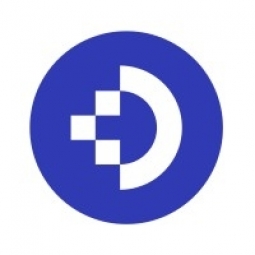下载PDF
Sigma Financial: Providing Personalized, yet Efficient Customer Service
技术
- 应用基础设施与中间件 - 数据交换与集成
- 应用基础设施与中间件 - 数据库管理和存储
适用行业
- 金融与保险
适用功能
- 销售与市场营销
- 商业运营
用例
- 监管合规监控
- 远程资产管理
- 欺诈识别
服务
- 系统集成
- 软件设计与工程服务
挑战
Sigma Financial 是一家提供全方位服务的顶级金融经纪交易商,它面临着与文档管理相关的多项挑战。每天早上,收发室的工作人员必须打开 100-150 个隔夜信封,其中包含 220-250 份长度为 8-10 页的销售表格。“原件”被发送到合规部门进行审批,一旦获得批准,表格将发送到销售处理部门,该部门通过隔夜邮件将“原件”发送到相应的基金公司。“副本”被发送到佣金部门,在那里,信息被手动输入到 Sigma 的佣金程序中,为销售代表提供销售信用。然后,销售代表将“副本”以销售代表的名义归档到 Sigma 的专用文件室。存储在那里的大多数记录需要保存七年,一些文档类型需要无限期保存。处理销售表格至少需要两天时间。平均文档检索时间为每份表格 10-15 分钟,通常每天要访问 20-30 份表格。由于 Sigma 的所有公司员工都可以访问档案室,因此检索、重新归档和跟踪已提取的文件变得更加困难。此外,Sigma 的空间已经不够用,需要增加额外的归档空间和人员。
关于客户
Sigma Financial 总部位于密歇根州安阿伯,是一家提供全方位服务的顶级金融经纪交易商。Sigma 成立于 1983 年,公司办公室拥有 90 名员工,通过与 Midland National Life Insurance 的合资企业,他们拥有遍布 48 个州的 1400 多名独立代表的网络。Sigma 销售各种各样的金融产品,从传统经纪账户到财务规划服务再到残疾保险。Sigma 将自己定位为“家庭”或个性化的经纪交易商。在自动电话接线员的世界中,Sigma 仍然有现场接待员接听电话并以友好的方式引导来电。该公司在过去十年中有七年获得了投资顾问传真调查的年度经纪交易商奖。在吸引高质量代表方面,Sigma 的一大优势是它为其代表提供的技术支持。
解决方案
Sigma 的电子文档管理解决方案包括 DocuWare 系统许可证以及 DocuWare ACTIVE IMPORT 和 CDMAKER 模块。还为该解决方案购买了 Canon 4050 扫描仪和 CD Rom Jukebox。五个全功能许可证和五个只读许可证为 Sigma 的所有公司员工提供了访问 DocuWare 的权限。每天有四到六名员工使用 DocuWare,其余员工则进出该程序来收集他们需要的信息。实施 DocuWare 后,建立了一个管理销售表格的工作流程,并作为销售传真录取程序慢慢地介绍给销售代表。Sigma 开发了一个传真封面,将 8-10 页销售表格中的所有重要信息汇编到一页上。这使 Sigma 能够“标准化”数百个不同基金不断变化的销售表格,并快速轻松地查看用作 DocuWare 文件柜中索引字段的信息。当销售表格传真到公司总部时,DocuWare 的 ACTIVE IMPORT 模块会从封面读取信息,并自动索引文档并将其放置在 DocuWare 篮子中以供合规部门审查。
运营影响
数量效益
相关案例.

Case Study
Real-time In-vehicle Monitoring
The telematic solution provides this vital premium-adjusting information. The solution also helps detect and deter vehicle or trailer theft – as soon as a theft occurs, monitoring personnel can alert the appropriate authorities, providing an exact location.“With more and more insurance companies and major fleet operators interested in monitoring driver behaviour on the grounds of road safety, efficient logistics and costs, the market for this type of device and associated e-business services is growing rapidly within Italy and the rest of Europe,” says Franco.“The insurance companies are especially interested in the pay-per-use and pay-as-you-drive applications while other organisations employ the technology for road user charging.”“One million vehicles in Italy currently carry such devices and forecasts indicate that the European market will increase tenfold by 2014.However, for our technology to work effectively, we needed a highly reliable wireless data network to carry the information between the vehicles and monitoring stations.”

Case Study
Safety First with Folksam
The competitiveness of the car insurance market is driving UBI growth as a means for insurance companies to differentiate their customer propositions as well as improving operational efficiency. An insurance model - usage-based insurance ("UBI") - offers possibilities for insurers to do more efficient market segmentation and accurate risk assessment and pricing. Insurers require an IoT solution for the purpose of data collection and performance analysis

Case Study
Smooth Transition to Energy Savings
The building was equipped with four end-of-life Trane water cooled chillers, located in the basement. Johnson Controls installed four York water cooled centrifugal chillers with unit mounted variable speed drives and a total installed cooling capacity of 6,8 MW. Each chiller has a capacity of 1,6 MW (variable to 1.9MW depending upon condenser water temperatures). Johnson Controls needed to design the equipment in such way that it would fit the dimensional constraints of the existing plant area and plant access route but also the specific performance requirements of the client. Morgan Stanley required the chiller plant to match the building load profile, turn down to match the low load requirement when needed and provide an improvement in the Energy Efficiency Ratio across the entire operating range. Other requirements were a reduction in the chiller noise level to improve the working environment in the plant room and a wide operating envelope coupled with intelligent controls to allow possible variation in both flow rate and temperature. The latter was needed to leverage increased capacity from a reduced number of machines during the different installation phases and allow future enhancement to a variable primary flow system.

Case Study
Automated Pallet Labeling Solution for SPR Packaging
SPR Packaging, an American supplier of packaging solutions, was in search of an automated pallet labeling solution that could meet their immediate and future needs. They aimed to equip their lines with automatic printer applicators, but also required a solution that could interface with their accounting software. The challenge was to find a system that could read a 2D code on pallets at the stretch wrapper, track the pallet, and flag any pallets with unread barcodes for inspection. The pallets could be single or double stacked, and the system needed to be able to differentiate between the two. SPR Packaging sought a system integrator with extensive experience in advanced printing and tracking solutions to provide a complete traceability system.

Case Study
Transforming insurance pricing while improving driver safety
The Internet of Things (IoT) is revolutionizing the car insurance industry on a scale not seen since the introduction of the car itself. For decades, premiums have been calculated using proxy-based risk assessment models and historical data. Today, a growing number of innovative companies such as Quebec-based Industrielle Alliance are moving to usage-based insurance (UBI) models, driven by the advancement of telematics technologies and smart tracking devices.

Case Study
MasterCard Improves Customer Experience Through Self-Service Data Prep
Derek Madison, Leader of Business Financial Support at MasterCard, oversees the validation of transactions and cash between two systems, whether they’re MasterCard owned or not. He was charged with identifying new ways to increase efficiency and improve MasterCard processes. At the outset, the 13-person team had to manually reconcile system interfaces using reports that resided on the company’s mainframe. Their first order of business each day was to print 20-30 individual, multi-page reports. Using a ruler to keep their place within each report, they would then hand-key the relevant data, line by line, into Excel for validation. “We’re talking about a task that took 40-80 hours each week,” recalls Madison, “As a growing company with rapidly expanding product offerings, we had to find a better way to prepare this data for analysis.”





